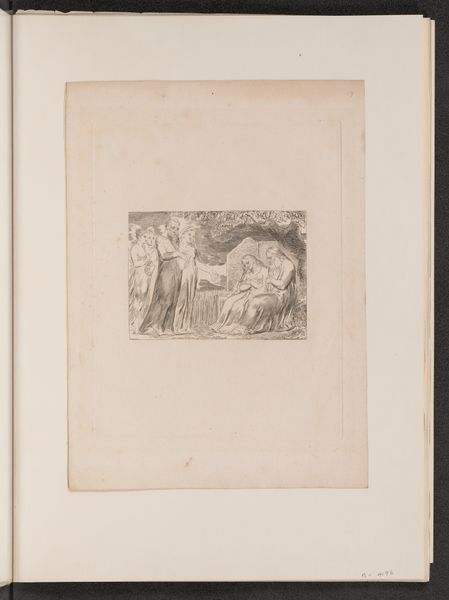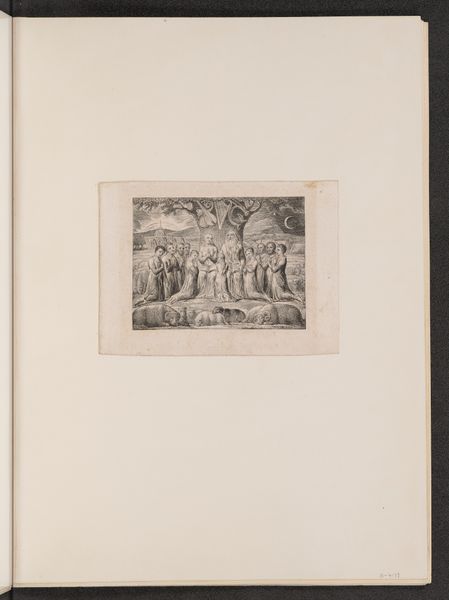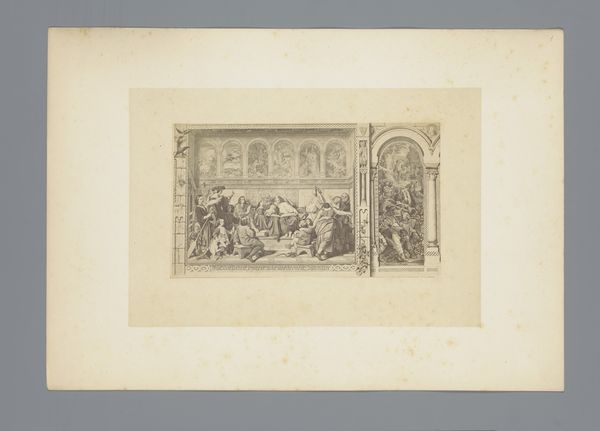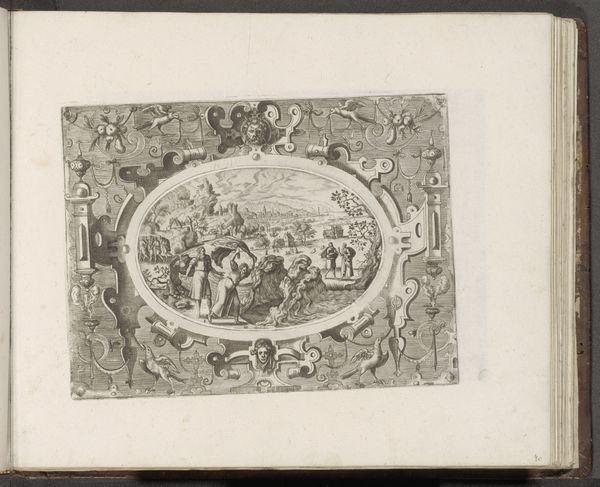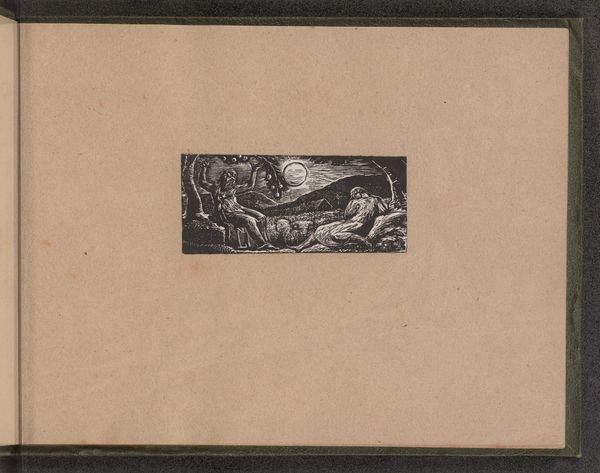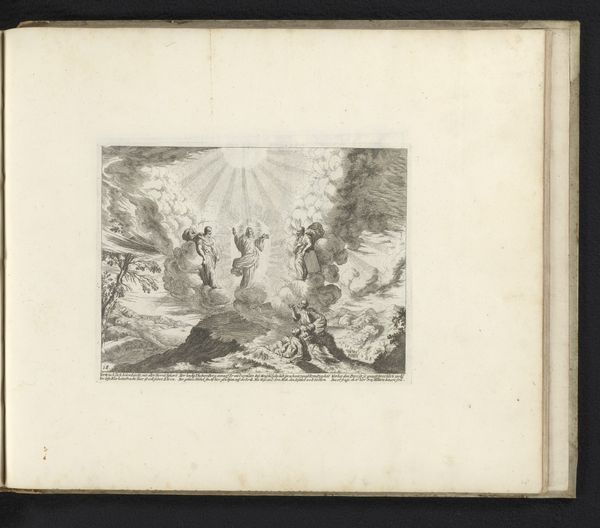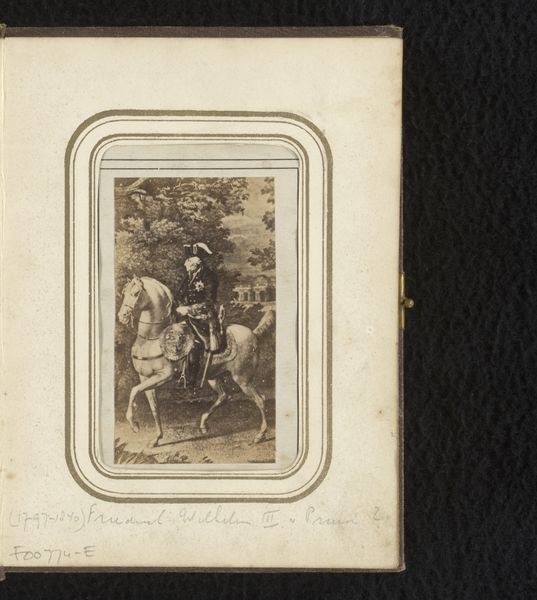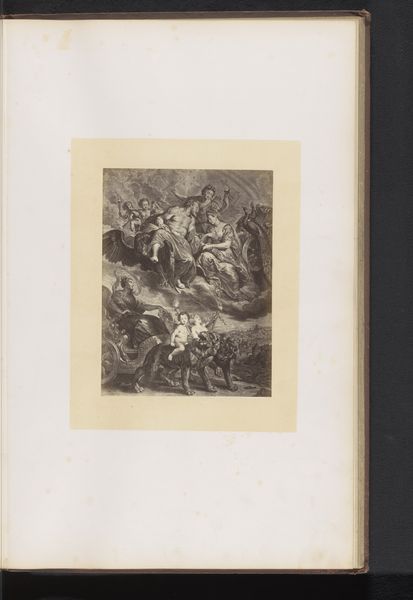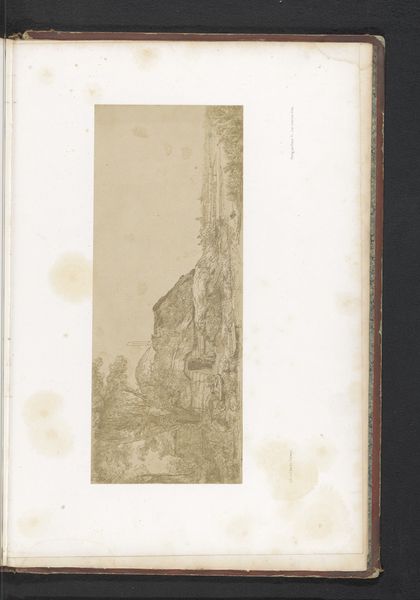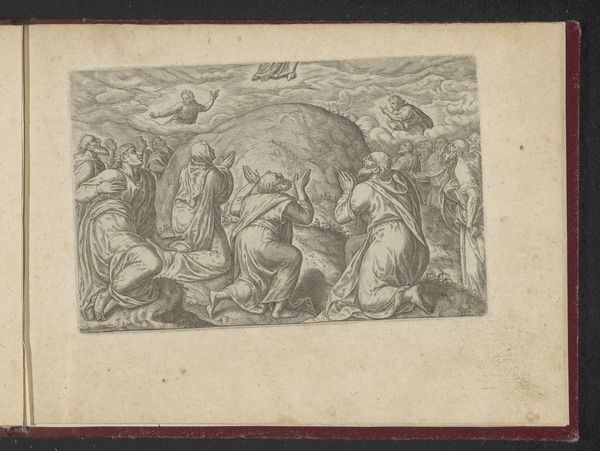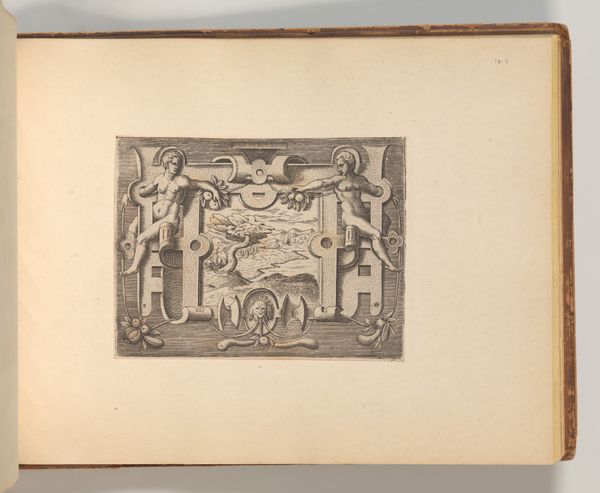
drawing, print
#
drawing
# print
#
sketch book
#
landscape
#
figuration
#
romanticism
Copyright: National Gallery of Art: CC0 1.0
Curator: So, this delicate image here is William Blake’s "Thenot and Colinet," dating from around 1821. It's a print, though the fine detail gives it the feel of a drawing. What's your take as we approach it? Editor: Bleakly beautiful. The high contrast really sets a scene—austere, yet with a quiet kind of dignity, even pastoral innocence with the little gathering of sheep, doesn’t it? Curator: Indeed. The romantic landscape with that sun radiating behind is archetypical for Blake. Note the division in the composition. We have Thenot, on the left, appearing wizened and paternal and, on the right, Colinet. Both are shepherds, if a little unconventional in style. Editor: I notice that; Colinet seems propped up against some object. But, it looks awkward. Are the supports behind Colinet the same level of finish and material care of Thenot? What was his etching setup and production timeline? That impacts the social distribution. Curator: Blake was often working outside of traditional commission systems, following his own spiritual vision. These figures, taken from a series illustrating pastoral poems, are more archetypes than portraits. The heavy lines and stark contrasts evoke a primal scene of questioning, with youth contrasted with age. Editor: It’s this intense labor, combined with Blake’s own political vision that complicates how we see romanticism. I wonder how he selected the inks... there is a deep consideration to production costs and resources at hand to think of printing images in mass? The question about this work boils down to “Who does this reach, and how?”. Curator: Maybe not a "who" so much as a "why". Blake engaged with Milton, Dante… He saw himself as part of a lineage of visionaries wrestling with fundamental human questions. "Thenot and Colinet," I believe, is a visual meditation on the dialogue between experience and innocence, tradition and individual revelation. Editor: Alright, I am swayed. I still wish Blake expanded this out beyond this etching into an inexpensive mode of dissemination of this labor-intensive vision, if only more of England could have participated and accessed this exchange. Curator: True. However, maybe this concentration – Blake's intense engagement in the physical making of the print, the almost obsessive detail, infuses it with its very unique sense of artistic vision? Editor: It's hard to argue with the effect. Alright, I can sit with that, even with the material limits of what you are arguing. It's pretty compelling here.
Comments
No comments
Be the first to comment and join the conversation on the ultimate creative platform.

